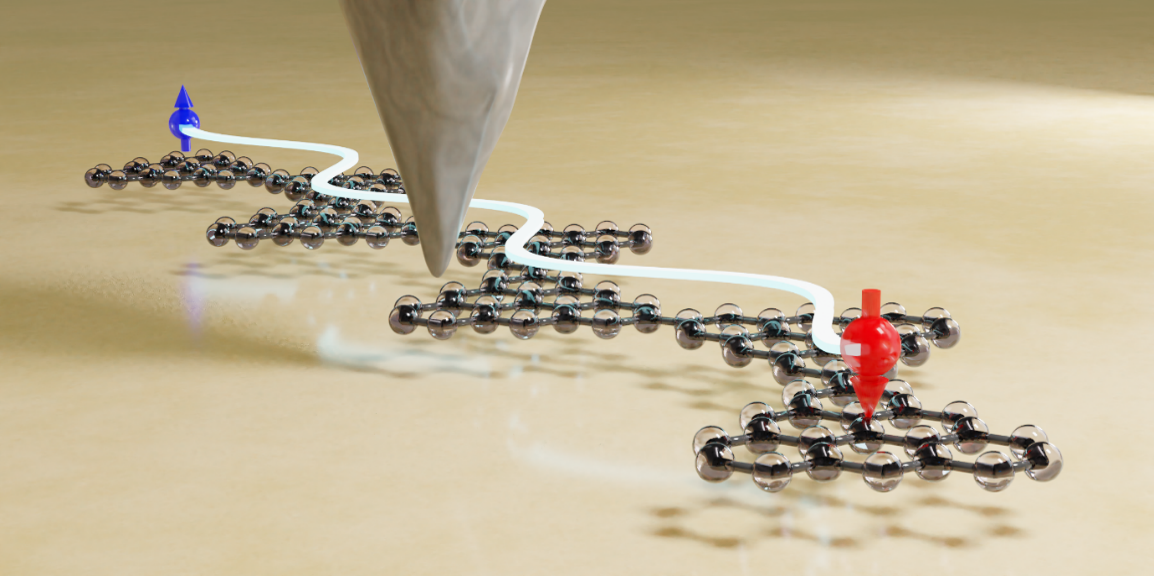
The idea that simple units come together to form more complicated structures is very common. Thus, atoms come together to form molecules, which in turn combine to form cells and these form tissues, ultimately giving rise to living beings. In the quantum world, this process can happen in the opposite direction, so that the interaction between complex particles gives rise to simpler ones. Thus, in certain circumstances, the interaction between electrons, indivisible particles with electric charge "e", give rise to the emergence of particles with charge "e/3". This phenomenon is known as fractionation.
Quantum Magic: Fractionating Spins
All elementary particles have intrinsic properties such as mass or charge, which are intuitive, and others such as spin, which we can visualize as a compass. Unlike normal compasses, which can point in any direction, the spin of quantum systems is quantized, and can only take on a discrete set of values. For example, we say that the spin of the electron is ½ and it can take only two values. Particles with spin 1 can take three values.
In the 1980s, the English physicist Duncan Haldane built a mathematical model for spin 1 particles in which the spins were split. Thus, a one-dimensional chain of indivisible particles of spin 1, interacting with its neighbors, gave rise to the appearance of particles of spin ½ at the edges of the chain. Like the magic trick in which the magician cuts a person in two halves and separates them, Haldane's model allows spins 1 to be split and separated. It is one of the central models of quantum magnetism, a work that awarded him the Nobel Prize in 2016.
One-dimensional chains of graphene magnetic molecules
Experimental verification of this prediction was complicated for several reasons, starting with the fact that there are no one-dimensional materials. There was indirect evidence for the phenomenon of spin fractionation in organometallic materials containing chains of magnetic atoms, but a direct observation was lacking. Now, however, that observation has been carried out by an international team of researchers, among which is the Ikerbasque researcher David Jacob, from the Department of Polymers and Advanced Materials: Physics, Chemistry and Technology of the Faculty of Chemistry of the UPV/EHU, which has collaborated on this work with the INL, the University of Alicante, the EMPA in Zurich and the University of Dresden.
To achieve this difficult achievement, researchers have combined organic chemistry techniques with ultra-high vacuum surface science to synthesize spin 1 graphene molecules that form one-dimensional chains. Using a tunnel-effect microscope, the researchers have been able to study the quantum states of the chain deposited on a gold surface with atomic resolution, compare them with those predicted by theory, and establish that the system behaves like Haldane's model. In particular, in chains with a sufficiently high number of magnetic molecules, the researchers found Kondo resonances at the ends of the chain, a phenomenon that occurs when ½-spin particles interact with electrons in a conductor such as gold.
From one-dimensional chains to two-dimensional networks and quantum computers
The researchers affirm that this work "shows the potential to use nanographs to form two-dimensional networks of nanomagnets that allow to verify predictions analogous to those of Haldane, such as the existence of quantum states that would allow quantum computing."
For further information: DOI: 10.1038/s41586-021-03842-3
.png)
